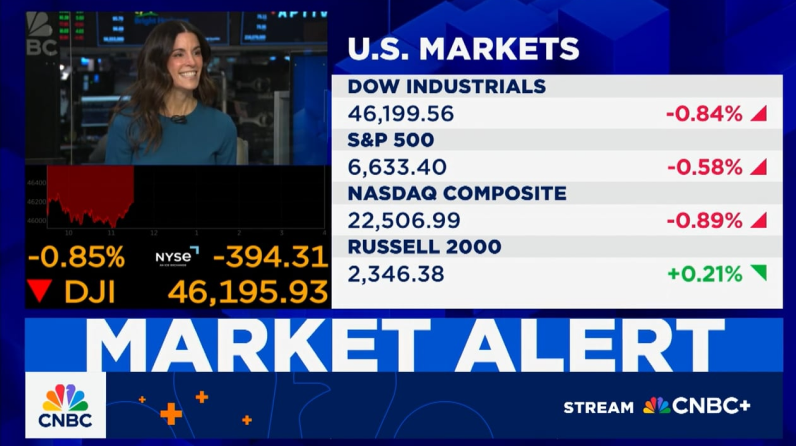

When taken together, this week’s data appears to be incrementally more supportive of rate cuts in 2024.
U.S. CPI data released today for April was, for the first time since the end of 2023, essentially in line with consensus estimates. Headline CPI was up +0.3% month-over-month and up +3.4% year-over-year versus expectations of +0.4% and +3.4%, respectively. Core CPI was up +0.3% on a month-over-month basis and up +3.6% on a year-over-year basis, matching both consensus estimates.
The trend remains consistent in our view in terms of inflation drivers. Shelter and energy costs continue to account for much of the month-over-month increase in headline CPI. Gasoline was up +2.8% on a month-over-month basis while shelter posted another +0.4% month-over-month jump, making it the third month in a row at that print for the sub-index. (Worth noting: gasoline prices are unlikely to post a similar move higher for the May reading, representing a potential source of downside surprise in this month’s print.) At the core level, shelter- and service-related costs such as medical care and insurance remained the primary drivers of the admittedly slower gain in core costs in April, but moderated on a month-over-month basis.
As for areas of progress, new and used car prices continue to decline on a month-over-month basis. The challenge of high auto loan rates may continue to weigh on prices as we move into the summer months. Food prices, when combining food at home and food away from home, were also flat for the month, representing a welcome offset to higher gas prices for consumers across the income spectrum.
Also released today was the advance retail sales report for April. According to the U.S. Census Bureau, retail sales on a month-over-month basis were flat and up +3% year-over-year. This compares with an increase of +0.7% in March. The flat reading was driven in large part by a decline of -1.2% in online sales, marking the fourth straight negative month for the sub-index. Of the major industries measured in the report, only apparel and food and beverage services spend was higher on a month-over-month basis. When considering the “control group,” which comprise the components of the report that eventually feed into GDP, this month marked a decline of -0.3%.
These more muted prints compared favorably with April PPI, released yesterday, which showed an increase of +0.5% on a month-over-month basis, compared to a revised decline of -0.1% in March. Driving the increase were services prices such as portfolio management costs while goods prices were driven higher by gasoline.
In our view, this week’s data appears to be incrementally more supportive of rate cuts in 2024. While one could take the stance that slowing retail sales prints could be combined with rising credit card balances and delinquencies as evidence of an exhausted consumer, we think that a moderation in spending that translates to lessened pressure on prices could represent the calculus the Federal Reserve (Fed) needs to gain the greater confidence it seeks. Expectations for PCE, which is the Fed’s preferred inflation measure, have drifted lower following today’s release.
Market reaction has been positive as U.S. equities opened the session in the green, led by the Russell 2000 Index, which was up over +1% to start the day. Treasury yields broke lower by about -0.07%, and the dollar weakened. In addition, we believe the probability of a rate cut by September increased incrementally based on today’s data. Coming up tomorrow are U.S. housing starts and building permits, but all eyes are now on the release of April’s PCE on May 31 and another round of jobs data on June 7.


VIDEO
The Kantor Group | Charles Kantor’s Year-End Reflections and Key Questions as We Head Into 2026

INSIGHTS
CIO Notebook: Dual Release of Delayed Non-Farm Payrolls Likely Supports Another Cut

INSIGHTS
Using Tax-Free Gifts for Wealth Transfer

INSIGHTS
CIO Notebook: Powell Plays the Middle as Fed Cuts Rates

MARKET COMMENTARY
Giving Thanks for Market Strength

INSIGHTS
CIO Notebook: September U.S. Non-Farm Payrolls Further Complicate the Narrative

VIDEO
Holly Newman Kroft Featured on CNBC’s Money Movers November 18
VIDEO
Plan for Peace of Mind with Our Estate Planning Organizer
MARKET COMMENTARY
Some Tricks, More Treats
INSIGHTS
CIO Notebook: Markets Rattled as Fed Leans Hawkish
REPLAY
Private Wealth Investment Outlook 4Q25
INSIGHTS
CIO Notebook: September Core CPI Comes in Late but Light
INSIGHTS
Charitable Fundraising: Moving Beyond Cash
IMPORTANT INFORMATION:
This material is provided for informational purposes only and nothing herein constitutes investment, legal, accounting or tax advice, or a recommendation to buy, sell or hold a security. This material is general in nature and is not directed to any category of investors and should not be regarded as individualized, a recommendation, investment advice or a suggestion to engage in or refrain from any investment-related course of action. Any views or opinions expressed may not reflect those of the firm as a whole. Neuberger Berman products and services may not be available in all jurisdictions or to all client types. Diversification does not guarantee profit or protect against loss in declining markets. Investing entails risks, including possible loss of principal. Investments in private equity are speculative and involve a higher degree of risk than more traditional investments. Investments in private equity are intended for sophisticated investors only. Unless otherwise indicated, returns shown reflect reinvestment of dividends and distributions. Indexes are unmanaged and are not available for direct investment. Investing entails risks, including possible loss of principal. Past performance is no guarantee of future results.
Portfolio positioning views expressed herein are those of Neuberger Berman’s Private Wealth Investment Group, which may include those of the Neuberger Berman’s Asset Allocation Committee. Asset allocation and positioning views are based on a hypothetical reference portfolio. The Private Wealth Investment Group analyzes market and economic indicators to develop asset allocation strategies. The Private Wealth Investment Group works in partnership with the Office of the CIO. The Private Wealth Investment Group also consults regularly with portfolio managers and investment officers across the firm. The Asset Allocation Committee is comprised of professionals across multiple disciplines, including equity and fixed income strategists and portfolio managers. The Asset Allocation Committee reviews and sets long-term asset allocation models, establishes preferred near-term tactical asset class allocations and, upon request, reviews asset allocations for large, diversified mandates. Asset Allocation Committee members are polled on asset classes and the positional views are representative of an Asset Allocation Committee consensus. The views of the Asset Allocation Committee and the Private Wealth Investment Group may not reflect the views of the firm as a whole and Neuberger Berman advisers and portfolio managers may take contrary positions to the views of the Asset Allocation Committee or the Private Wealth Investment Group. The Asset Allocation Committee and the Private Wealth Investment Group views do not constitute a prediction or projection of future events or future market behavior. Defensive positioning generally means an underweight bias on allocations to risk assets such as equities and alternatives. Positioning views may change over time without notice and actual client positioning may vary significantly. Discussion of yield characteristics or total returns of different asset classes are for illustrative purposes only. Such asset classes, such as equities and fixed income, may have significantly different overall risk-return characteristics which should be consider before investing.
The information in this material may contain projections, market outlooks or other forward-looking statements regarding future events, including economic, asset class and market outlooks or expectations, and is only current as of the date indicated. There is no assurance that such events, outlook and expectations will be achieved, and actual results may be significantly different than that shown here. The duration and characteristics of past market/economic cycles and market behavior, including any bull/bear markets, is no indication of the duration and characteristics of any current or future be market/economic cycles or behavior. Information on historical observations about asset or sub-asset classes is not intended to represent or predict future events. Historical trends do not imply, forecast or guarantee future results. Information is based on current views and market conditions, which will fluctuate and may be superseded by subsequent market events or for other reasons.
Discussions of any specific sectors and companies are for informational purposes only. This material is not intended as a formal research report and should not be relied upon as a basis for making an investment decision. The firm, its employees and advisory accounts may hold positions of any companies discussed. Nothing herein constitutes a recommendation to buy, sell or hold a security. It should not be assumed that any investments in securities, companies, sectors or markets identified and described were or will be profitable. Investment decisions and the appropriateness of this content should be made based on an investor's individual objectives and circumstances and in consultation with his or her advisors.
Neuberger Berman Investment Advisers LLC is a registered investment adviser.
The “Neuberger Berman” name and logo are registered service marks of Neuberger Berman Group LLC